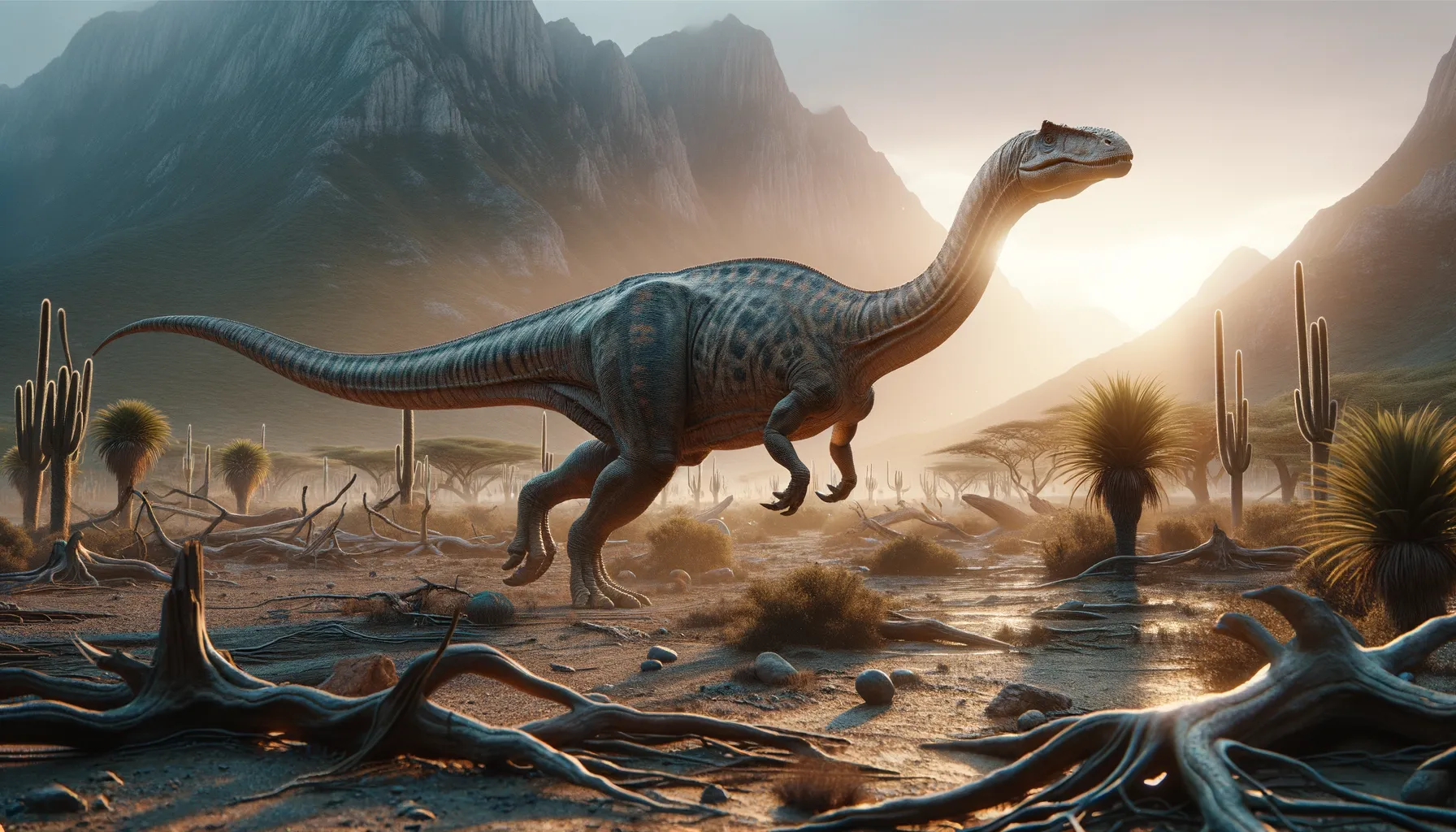
Sefapanosaurus
Gentle giant from the Jurassic age.
Period
Jurassic
Length
About 9 meters long.
Height
Approximately 2 meters tall.
Weight
Estimated to weigh around 1.5 tons.
Sefapanosaurus was a plant-eating dinosaur that roamed southern Africa during the Jurassic period. With its sturdy build and long limbs, it likely moved slowly through its prehistoric world. First discovered in South Africa, this dinosaur was initially categorized with another species until recent research revealed its unique traits, leading to its own classification.
Diet
Sefapanosaurus mainly consumed plants. Its flat teeth were adapted to grinding vegetation, suggesting a diet of ferns and conifers prevalent in its era.
Hunting
As a herbivore, it didn’t hunt but likely browsed for food. Its long neck might have helped reach higher plants and shrubs.
Environmental challenges
Sefapanosaurus faced threats from predators like early theropods. It may have also contended with environmental changes that affected plant availability. Adapting to seasonal shifts in vegetation would have been crucial for its survival.
Speed
Likely a slow-moving herbivore.
Lifespan
Estimated to live over a decade.
First discovery
Unearthed in South Africa in 1930s, described in 2015.
Fun Facts
- Sefapanosaurus was a dinosaur that lived about 200 million years ago during the early Jurassic period.
- The name 'Sefapanosaurus' means 'cross lizard,' which comes from the cross-shaped ankle bone found in its fossil remains.
- It was a medium-sized dinosaur, estimated to be around 5 meters long, making it one of the smaller sauropodomorphs.
- Sefapanosaurus was a plant-eater, using its long neck to reach leaves and other vegetation.
- Its fossils were discovered in South Africa, adding to the rich diversity of dinosaurs known from the region.
- Sefapanosaurus is related to the giant long-necked sauropods, but it was far smaller and more agile.
- The discovery of Sefapanosaurus helped scientists better understand the evolution of early sauropodomorph dinosaurs.
Growth and Development
Sefapanosaurus, like other sauropodomorphs, likely started small and grew rapidly. Its long limbs and tail suggest a gradual development from a hatchling to full size. Growth rings in its bones might indicate fluctuating growth rates influenced by food availability.
Habitat
This dinosaur lived in what is now southern Africa, surrounded by lush vegetation. It preferred regions with ample plant life, such as forests. The presence of rivers and lakes would have been ideal to support its dietary needs.
Interaction with other species
Sefapanosaurus likely lived in communities with other herbivorous dinosaurs. These interactions would have been mostly peaceful, centered around feeding grounds. Its size and herding behavior may have offered protection against carnivorous predators.
Natural lifespan
Sefapanosaurus likely lived over a decade in the wild.
Reproduction
Sefapanosaurus reproduced by laying eggs, likely in nests similar to other dinosaurs of its time. Parental care is uncertain, but some level of protection over nests might have been present.
Social behaviour
This dinosaur might have exhibited herding behavior for protection. Living in groups would help deter predators and offer social interactions critical for survival.
Fossil locations
Fossils of Sefapanosaurus have been primarily found in the Elliot Formation of South Africa. These discoveries have shed light on the diversity of saurischian dinosaurs in the region.
